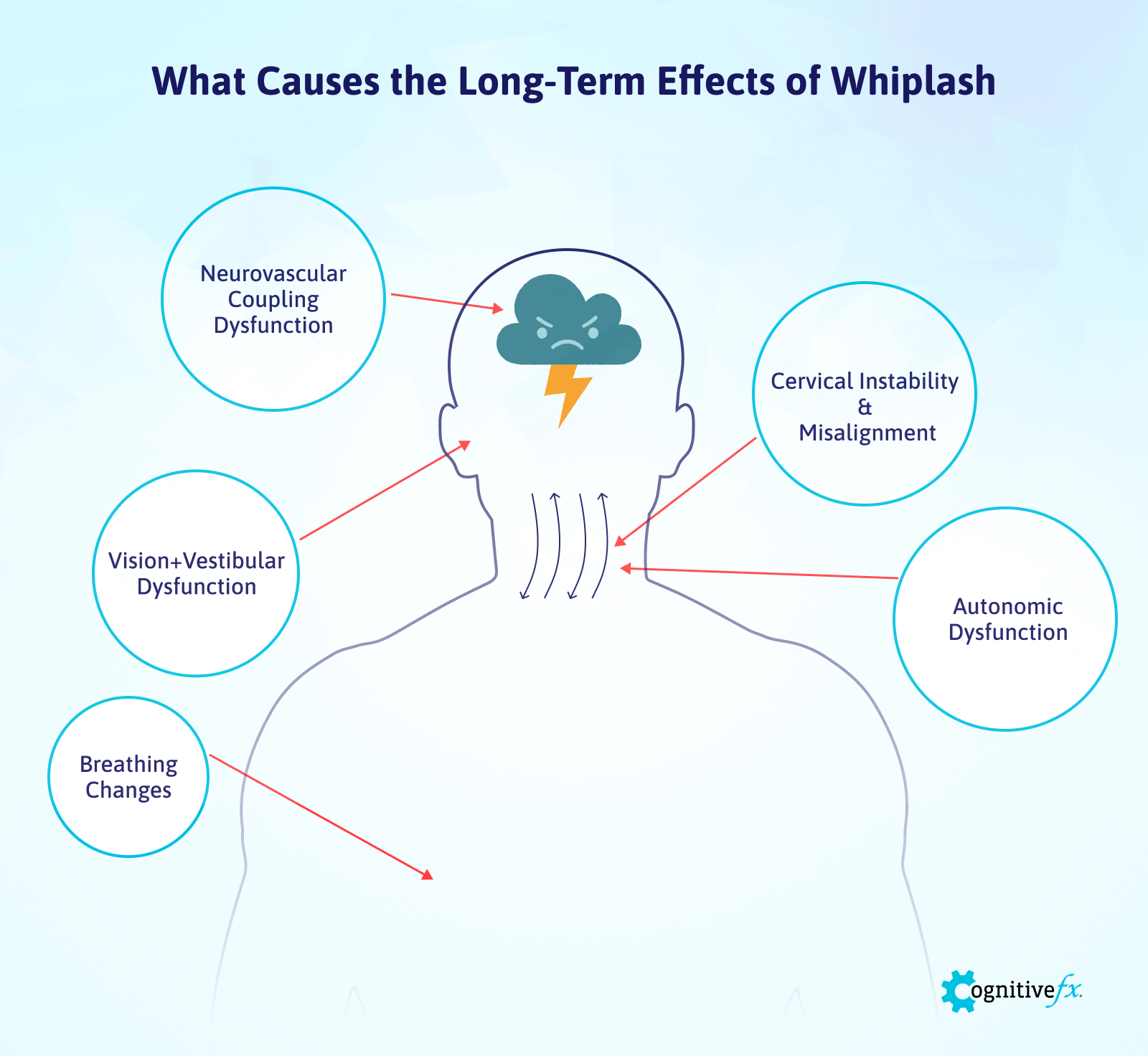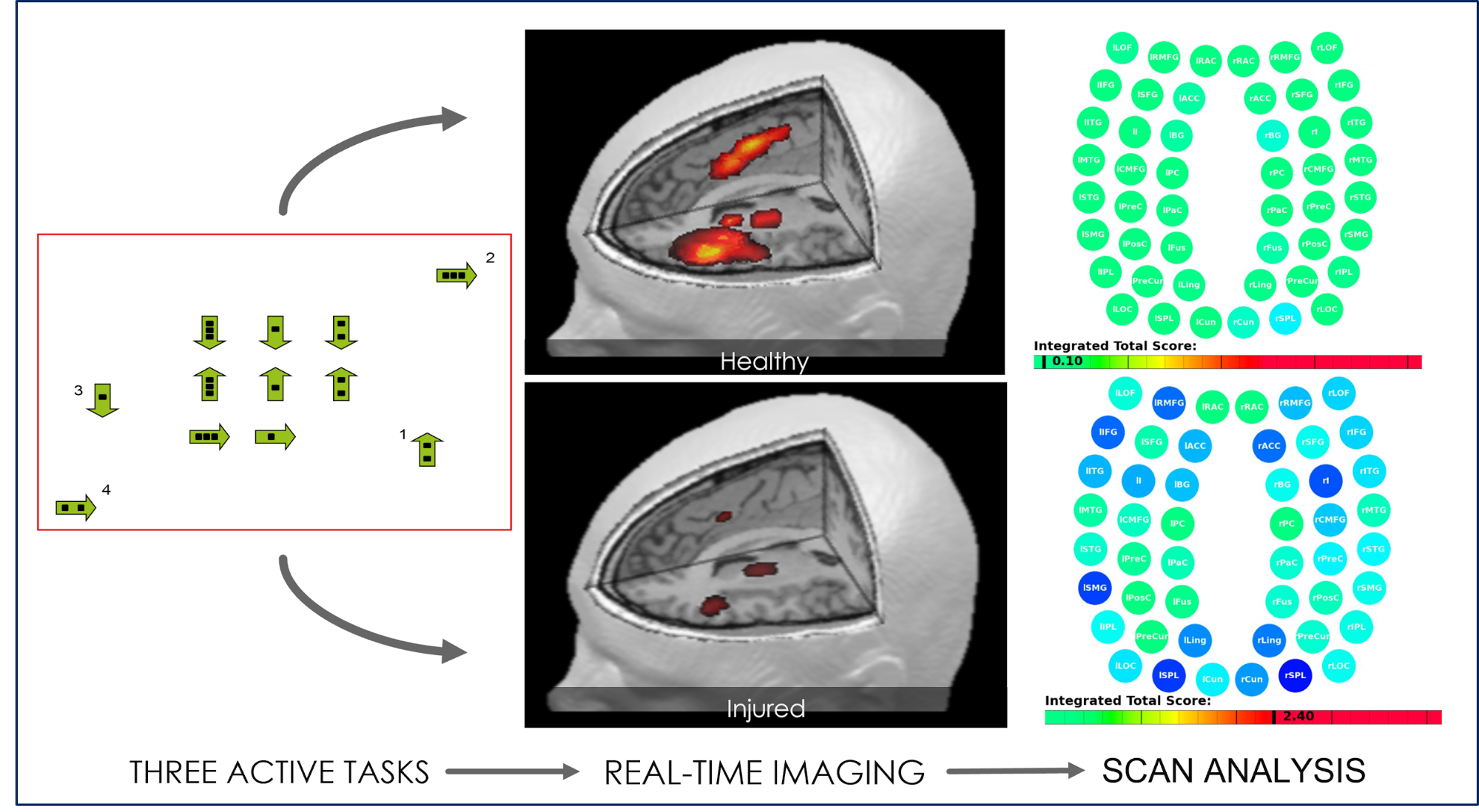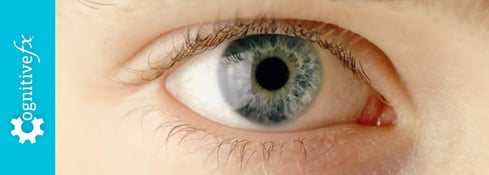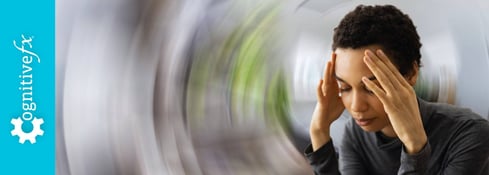How Head Injuries Cause Vertigo Years Later
Vertigo is acommonsymptom after a mild traumatic brain injury (mTBI). Most patients describe it as feeling like either the room is spinning or they are.Almost halfof those who sustain a...
Published peer-reviewed research shows that Cognitive FX treatment leads to meaningful symptom reduction in post-concussion symptoms for 77% of study participants. Cognitive FX is the only PCS clinic with third-party validated treatment outcomes.
READ FULL STUDY

Whiplash can cause physical and neurological damage that results in long-term symptoms. In addition, the same event that caused whiplash could also have caused a concussion. (The sudden motion can cause the brain to collide with the skull even if there is no external impact on the head.) Concussions can develop into post-concussion syndrome (PCS), with symptoms persisting for months or even years.
After whiplash, many patients choose to see a chiropractor or osteopath. Spinal manipulation techniques may offer relief for a few days, but symptoms often come back. Patients then need multiple visits of chiropractic care to get repeatedly adjusted. In addition, spinal manipulation can be difficult if the damage is mainly affecting the first few vertebrae (called C1 and C2). Anything in this area needs an extremely gentle approach to ensure that it doesn’t cause further damage. (We’ve treated patients who sustained a concussion when their chiropractor adjusted C1 or C2 too violently.)
Unfortunately, because these adjustments often don’t resolve the underlying causes of long-term whiplash symptoms, patients may suffer for months or even years from the long-term effects.
At Cognitive FX, we offer a different approach. At our clinic, we guide our patients through a series of targeted mobility and strengthening exercises specifically designed to help nerves and muscles in the neck recover from the effects of whiplash. In addition, our treatment program takes a whole-person approach to addressing long-term whiplash and concussion effects — such as headaches, brain fog, emotional changes, sleep disruption, and more — using a combination of aerobic exercises and multidisciplinary therapies.
In this article, we’ll cover:
If you’re experiencing persistent symptoms such as brain fog, fatigue, memory problems, vision changes, and more, months or years after whiplash, you’re not crazy. These are real symptoms caused by changes in the brain and autonomic system, and they can be helped. Over 90% of our patients experience significant recovery after treatment in our clinic. To determine if our program is right for you, please schedule a consultation with our team.
.jpg?width=1000&height=445&name=whiplash%20(2).jpg) Whiplash is a neck injury that happens when the head is forcefully thrown backward and then forward (or side to side), like the cracking of a whip. Whiplash is actually a colloquial name for this condition. The correct medical terms are "cervical acceleration–deceleration" (CAD) to describe the mechanism of the injury and "whiplash associated disorder" (WAD) to describe the symptoms.
Whiplash is a neck injury that happens when the head is forcefully thrown backward and then forward (or side to side), like the cracking of a whip. Whiplash is actually a colloquial name for this condition. The correct medical terms are "cervical acceleration–deceleration" (CAD) to describe the mechanism of the injury and "whiplash associated disorder" (WAD) to describe the symptoms.
The same sudden movement of the head can also cause a traumatic brain injury (TBI). In fact, it is extremely common to have both whiplash and a concussion. When you seek medical care to treat whiplash, it’s important to discuss any signs of a concussion as well.
A whiplash injury may result from situations such as the following:
Further reading: Persistent concussion symptoms after a car accident
After the injury, the body’s first response is shock. Patients experience an adrenaline rush, and many don’t feel any pain for a while.
After a few hours, the affected area begins to swell and become inflamed. This is usually when patients start to notice pain and stiffness in the neck. In addition, damage to the ligaments and muscles in the neck prevents the back bones (vertebrae) from moving freely. This limited range of motion creates further inflammation of the joints and surrounding soft tissues.
In more severe cases, patients may also experience damage to the discs (soft cushions between each vertebra), leading to a bulging disc or even a hernia. This results in severe nerve pain, accompanied by numbness and tingling down the arm. In rare instances, patients may need treatment for fractures of one or more vertebrae.
There are five classifications of whiplash:
If you haven’t done so already, seek medical care if you’ve experienced whiplash. Your doctor will be able to assess what level of whiplash you have and recommend treatment. This is especially important if you suspect WAD type 3 or 4, where doctors may recommend an X-ray or MRI scan to detect any fractures.
The symptoms of whiplash usually manifest themselves within hours of an injury, but some may take several days to appear. Some immediate symptoms include:
.jpg?width=1000&height=445&name=whiplash%20(1).jpg)
Many patients who have whiplash after a car crash or sports injury feel better within a few days or weeks and don't have any lasting effects from the injury. However, some patients continue to have pain and other symptoms for several months or years after the initial injury. Anywhere between 50% and 90% of patients are known to have some degree of persistent symptoms. In addition, most recovery occurs within three months of the injury. Without treatment, patients show minimal improvement after that period.
The long-term effects of whiplash include:
It can be difficult to predict if a patient is going to experience long-term symptoms after a whiplash. As a general rule, patients are more likely to have chronic whiplash if their first symptoms are intense and start rapidly. Patients have a higher risk of developing chronic neck pain and other symptoms if they:
When symptoms develop gradually, many patients decide not to seek medical treatment, hoping the pain and soreness will go away on its own. In cases of whiplash, it’s always better to seek medical attention. Damaged neck muscles and ligaments require expert medical care like what we offer at Cognitive FX. (More on this later.)

It’s impossible to determine what causes long-term symptoms after whiplash, but common causes include:
The neck — known as the cervical region — consists of vertebrae that are smaller and more mobile than in the rest of the spine. After whiplash, the upper vertebrae (C1-C2) and lower vertebrae (C6-C7) often get "locked up" or "stuck," which causes the middle of the cervical spine (C3-C5) to become hypermobile. This situation leads to guarding and tightness in the neck. The force of the whiplash injury can cause misalignment in C1-C2; it takes a gradual approach and more work to get them to go back into place and stay (anatomically, C1 and C2 are harder to reach than the rest of the vertebrae).
Under normal circumstances, all the structures that need to go through the neck, including blood vessels, muscles, ligaments and nerves, are properly aligned and protected.
After whiplash, however, when the ligaments in the neck become overextended and disrupted, the cervical instability and misalignment discussed above occur. As a result, an unstable cervical spine cannot provide support for the body and brain to function properly and results in a multitude of different symptoms. Cervical instability:
In a healthy brain, nerve cells receive the resources they need via a network of blood vessels. When specific areas in the brain need oxygen and nutrients to complete a task, the surrounding blood vessels deliver what they need at the right time and to the right place. This mechanism is called neurovascular coupling (NVC).
However, whiplash causes changes in blood flow in the brain and disrupts this connection. As a result, regions of the brain may not receive the resources needed to complete a particular task. This seems particularly to affect areas of the brain involved in pain perception and processing sensory information, which may explain some chronic symptoms such as constant pain and fatigue.
Whiplash can also affect the autonomic nervous system (ANS). The ANS includes two important subsections called the sympathetic nervous system (SNS) and the parasympathetic nervous system (PNS), which control many vital bodily functions, such as blood pressure and heart rate.
The SNS controls our responses to stressful situations (known as the fight-or-flight response), while the PNS has a more calming influence (known as a rest-and-digest response). Throughout the day, both sides work together, and dominance changes between SNS and PNS as needed.
However, whiplash can cause the SNS to stay activated most of the time, leading to symptoms such as chronic pain, fatigue, headaches, high blood pressure, digestive issues, problems sleeping, and mood changes.
If the spinal cord gets damaged during whiplash, it’s likely to affect many functions in your body, including breathing. Any pressure or damage to the nerves in the spinal cord can interfere with the connection between your brain and your organs, including the lungs. This can cause hyperventilation, irregular breathing patterns, shortness of breath (dyspnea), and irregular heart rhythm.
It’s common for patients to develop visual and balance issues after whiplash.
There are three systems that work together to control vision and balance: the eyes (vision), the inner ear (vestibular), and information from body movement (proprioception). The neck region contains multiple nerves that are part of these systems that relay information between the body and the brain. Based on the information it receives, the brain then sends messages to the vestibular and vision systems to keep your posture balanced and your vision focused.
If whiplash damages these nerves, they might relay incorrect information about your position and movement to the brain, which in turn affects the vision and vestibular system. This leads to a variety of symptoms, such as dizziness, vertigo, lightheadedness, spatial disorientation, poor reading concentration, light sensitivity, double vision, and eyestrain.
Further reading: Post-concussion dizziness
.jpg?width=1999&height=1333&name=whiplash%20(4).jpg)
We specialize in treating patients with lingering symptoms post-head injury. For patients with whiplash, we adjust our treatment protocol to address the underlying neck and autonomic issues that contribute to symptoms.
Before treatment starts, all of our patients undergo a detailed medical exam to determine how whiplash (and potentially a head injury) have affected their brain. During this process, our therapists will ask about symptoms and medical history, as well as conduct a series of physical, cognitive, and psychological tests.
Patients also go through a brain imaging scan called functional NeuroCognitive Imaging (fNCI). fNCI assesses about 100 regions in the brain and how those regions communicate with each other while the patient performs a series of standardized cognitive tasks.

For many of our patients — like Myrthe van Boon — seeing the scan results is an emotional experience. Myrthe had a skiing accident when she was 22 and hit her head on the ground. Over the next 13 years, she experienced persistent symptoms, but many of the doctors she visited either said they couldn’t help or that she was making up her story. After a chance encounter with a friend, she found Cognitive FX. The first thing she did at our clinic was get an fNCI scan to identify the regions of her brain that were affected by the concussion.
“I was so anxious before I went because I had the feeling there would be nothing from the scan. That they would say again, ‘Sorry, we cannot find anything.’ But all the problems that I experienced were in the scan. So that was an emotional moment. After all those years, to think, ‘Wow, it is in my brain, and the things that I thought were wrong are.'", she said.
Using the results from the scan, our team then gathers all the information and develops a treatment plan customized for each patient.
.jpg?width=1999&height=1333&name=whiplash%20(6).jpg)
Treatment starts with short sessions of aerobic exercise to take advantage of a mechanism in the brain called the post-exercise cognitive boost (PECB). This mechanism promotes the release of helpful chemicals in the brain, including one called brain-derived neurotrophic factor (BDNF). BDNF stimulates the growth of brain cells and improves communication between different areas of the brain, which in turn makes the patient’s brain more able to benefit more from subsequent therapy. In addition, studies show that aerobic exercise can reduce neck pain in patients with whiplash. This effect is called exercise-induced hypoalgesia.
Our patients engage in a series of multidisciplinary therapies, including:
Most patients receive most of these therapies during their visit, but the way in which they are administered is specific to each patient. For example, patients with whiplash may need more intense neuromuscular or physical therapy. In neurointegration therapy, they’ll likely get targeted mobility and strengthening exercises to help with the eyes, ears, and tongue. Addressing mobility and stability issues early on in treatment is important so patients can take full advantage of subsequent therapies, such as cognitive or sensorimotor therapy.

We do not offer neck adjustments like those offered by chiropractors. However, after our initial consultation, we will guide patients to determine what the next steps should be. For some patients, this may involve seeing a chiropractor with special training in gentle adjustments for C1 and C2. If that’s the case for you, we can refer you to a trained chiropractor with experience in dealing with whiplash cases.
For patients who need it, chiropractic techniques to ensure the neck is properly aligned followed by our mobility and strengthening exercises is the best approach. That’s because the mobility and strengthening exercises help the neck muscles to adopt the changes implemented by the chiropractor. Without retraining the neck and brain, most patients are unable to maintain the progress made in their chiropractor appointment and become trapped in an endless cycle of visits to the chiropractor’s office. We focus on retraining motor control so that the body adopts healthier positioning and motion without needing to be consciously corrected.
“I saw myself and others heal miraculously fast. No other treatment came close to the effectiveness of what CFX did for me. I live in the Netherlands and have tried all known forms of treatment for concussions there. Some provided relief for my whiplash and visual problems, but unfortunately only minimal relief in comparison to what I received at CFX,” shared patient Sophia van Bennekom in a Google review of Cognitive FX.
Anecdotally, we often see that patients with whiplash and concussion take a little longer to recover than if they had just a concussion. After therapy, they see improvements in fatigue or brain fog but still have problems with the neck and back. Full recovery is possible for most of these patients, but it does take more time and follow-up care.
At the end of the treatment, patients undergo a second imaging scan to see how much the brain has improved. Patients also meet with one of our therapists to go over their results and receive a list of exercises to do at home to continue recovery. This homework typically includes physical exercises, cognitive activities, and relaxation techniques. For most patients, it takes about one hour, five times a week, but this regimen can be reduced as symptoms improve. In addition, if our therapists feel that you may benefit from further treatment types, we suggest suitable specialists.
On average, 90% see improvement in their reported symptoms over the course of treatment, which reflects in better quality of life. And symptom improvement is, on average, 60%.
-1.png?width=1215&height=351&name=whiplash%20(7)-1.png)
To determine if our program is right for you, please schedule a consultation with our team.
Aimee, one of our patients, suffered the long-term effects of a car accident for 17 years before finding Cognitive FX. Here’s what she experienced from treatment:
It’s not easy to cope with constant neck and back pain from whiplash. Here are a few suggestions to help you during your recovery:
You can start some gentle exercises immediately after your injury. Stretching can help decrease pain and improve motion. Start slowly and gradually increase as you feel better. Fear of moving because of the pain can significantly delay your recovery.
Your doctor or physical therapist may be able to recommend some light stretches that are gentle on your neck and spine, slowly encouraging more range of motion. If you experience severe pain during these exercises, stop right away. It’s important to note that these stretches are meant to supplement your medical care, not to act as stand-alone treatment.
Exercises may include:
.jpg?width=1000&height=445&name=whiplash%20(3).jpg)
Our therapists also suggest a range of other exercises that may be useful for patients recovering from whiplash. These include gargling, humming, or swallowing to stimulate some of the nerves running through your neck.
For example, these exercises stimulate your vagus nerve (which runs from the brain into the abdomen) and activate your parasympathetic nervous system, which in turn exerts a calming effect on the body and lowers pain.
Another example of muscle work we do is tongue positioning. The ideal position of rest for your tongue is on the roof of the mouth, away from your teeth. Proper tongue positioning can lower neck and jaw pain and reduce the number or intensity of headaches.
That’s because the muscles of the tongue and throat are responsible for reflexive stabilization of the cervical spine, meaning they offer stability and support even though you aren't thinking about it. Proper tongue positioning and throat function take pressure off of the bigger, voluntary muscles that tend to get tight when they’re overcompensating for post-whiplash changes.
In the first few days after your injury, applying ice to the neck can reduce pain and swelling. The cold temporarily reduces blood flow to the area and prevents further swelling. Remember to always wrap ice or an ice pack in a light towel to avoid direct contact with your skin.
Afterwards, you can switch to applying heat to the same areas. Heat loosens muscles and encourages blood flow to the soft tissues. You can also try to alternate between cold and heat for maximum relief.
If the pain is too severe, you can try over-the-counter painkillers, including acetaminophen (Tylenol) and nonsteroidal anti-inflammatory drugs (NSAIDs), such as Advil, Aleve, and Motrin.
Getting a good night’s sleep can be difficult if you have whiplash. Even small movements seem to trigger intense pain. A few suggestions include the following:
Ready to start your recovery journey at Cognitive FX? Schedule a consultation with our team.

Andy is a Certified Athletic Trainer (ATC) and Z-Health Performance Master Trainer. He began his career in Orthopedics, then worked as Head Athletic Trainer and Director of Human Performance at a specialty physical therapy clinic. Here, his passion for innovative human body approaches ignited. In 2010, he founded Fitness Evolved in Berkeley, CA, focusing on a neurologically informed health and exercise paradigm. Andy mastered the Z-Health Performance Solutions system, creating brain-centric training and rehab at Fitness Evolved, serving diverse clients, including pro athletes and brain injury survivors. He's an accomplished Z-Health instructor, having trained professionals worldwide. Andy is thrilled to join Cognitive FX, contributing to our revolutionary concussion and TBI recovery techniques.

Vertigo is acommonsymptom after a mild traumatic brain injury (mTBI). Most patients describe it as feeling like either the room is spinning or they are.Almost halfof those who sustain a...

After headaches, dizziness is the second most common symptom patients experience after a concussion. Although this symptom often resolves by itself, it becomes persistent and debilitating for some...

If left untreated, whiplash can cause long-term symptoms that are unlikely to go away on their own. Studies show that some patients recover within the first three months after their neck injury, but...

Eye twitching is typically mild and short-lived, but for some patients with post-concussion syndrome (PCS), it can become a persistent and uncomfortable symptom. While often overlooked, eye twitching...

Dizziness. Nausea. Balance problems. Car-sickness. These are a few of the unpleasant symptoms of vestibular dysfunction after a head injury. Fortunately, they don’t have to be permanent; most...

Balance is a complex physiological process involving multiple systems in the body, which can be easily disrupted following a concussion. Between 40 and 60% of patients experience balance and...
Published peer-reviewed research shows that Cognitive FX treatment leads to meaningful symptom reduction in post-concussion symptoms for 77% of study participants. Cognitive FX is the only PCS clinic with third-party validated treatment outcomes.
READ FULL STUDY